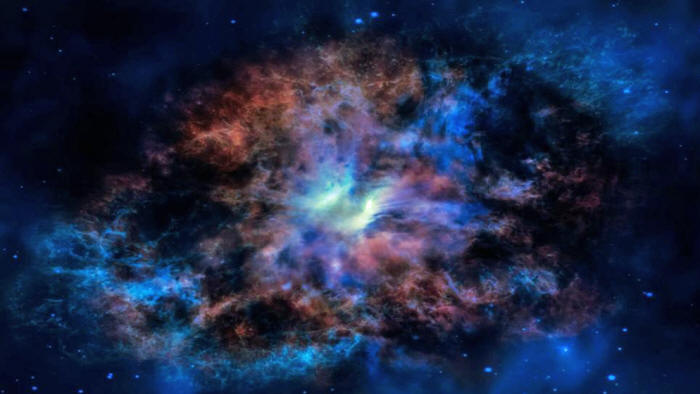|
(Image credit: iStock/Getty
Images Plus) left over from the Big Bang to perform the earliest detection
of dark matter ever...
The findings, achieved by a collaboration led by researchers from Japan's Nagoya University, suggest that dark matter in the early universe is less 'clumpy' than predicted by many current cosmological models.
If further work confirms this theory, it could change scientists' understanding of,
The key to mapping dark matter in the very early universe the cosmic microwave background (CMB), a sort of fossil radiation left over from the Big Bang that is distributed throughout the entire cosmos.
Because light takes a finite time to travel from distant objects to Earth, astronomers see other galaxies as they existed when the observed light left them.
Observing dark matter is even trickier.
It doesn't interact with matter and light like the everyday matter made of protons and neutrons that fills stars, planets and us.
Detecting 'early' dark matter
To 'see' dark matter at all, astronomers must rely on its interaction with gravity.
According to Einstein's theory of relativity, objects of tremendous mass cause the curvature of space-time. A common analogy is a stretchy rubber sheet holding balls of increasing mass.
Massive objects like galaxies cause space-time to curve so strongly that light from sources behind a galaxy is curved, just like the path of a marble rolled across the stretched rubber sheet would deviate.
This effect shifts the position of the light source in the sky, a phenomenon called gravitational lensing.
To study the distribution of dark matter in a galaxy, astronomers can observe how light from a source behind that galaxy is changed as it passes the 'lens galaxy.'
But the technique has limitations.
Because the earliest and most distant galaxies are very faint, as astronomers look deeper into the universe and further back in time, the lensing effect becomes more subtle and difficult to see and scientists need both a lot of background sources and a lot of early galaxies to spot lensing by dark matter.
This problem has limited the mapping of dark matter distribution to galaxies that are around 8 to 10 billion years old.
But the CMB provides a more ancient light source than any galaxy.
And just like light from other distant sources, the CMB can be distorted by galaxies with dark matter due to gravitational lensing.
The team combined lensing distortions of a large sample of ancient galaxies with those of the CMB to detect dark matter dating back to when the universe was just 1.7 billion years old.
And this ancient dark matter paints a very different cosmic picture.
These clusters can be comprised of between 100 and 1,000 galaxies bound to large amounts of dark matter by gravity.
Is dark matter clumpy?
One of the most significant aspects of the team's findings is the possibility that dark matter is less clumpy in the early universe than many current models suggest it should be.
For example,
The team will continue to collect data to assess whether the Lambda-CDM model conforms to observations of dark matter in the early universe or if the assumptions behind the model need to be revised.
The data used by the team to reach their findings originated from the Subaru Hyper Suprime-Cam Survey, which analyzes data from a telescope in Hawai'i.
But the researchers have used only a third of this data thus far, meaning that a better dark matter distribution map could be available as the rest of the observations are incorporated.
The team is also looking forward to data from the Vera C. Rubin Observatory's Legacy Survey of Space and Time (LSST) which could allow the researchers to look at dark matter even further back in time.
The team's research was published Aug. 1 in the journal Physical Review Letters.
|


